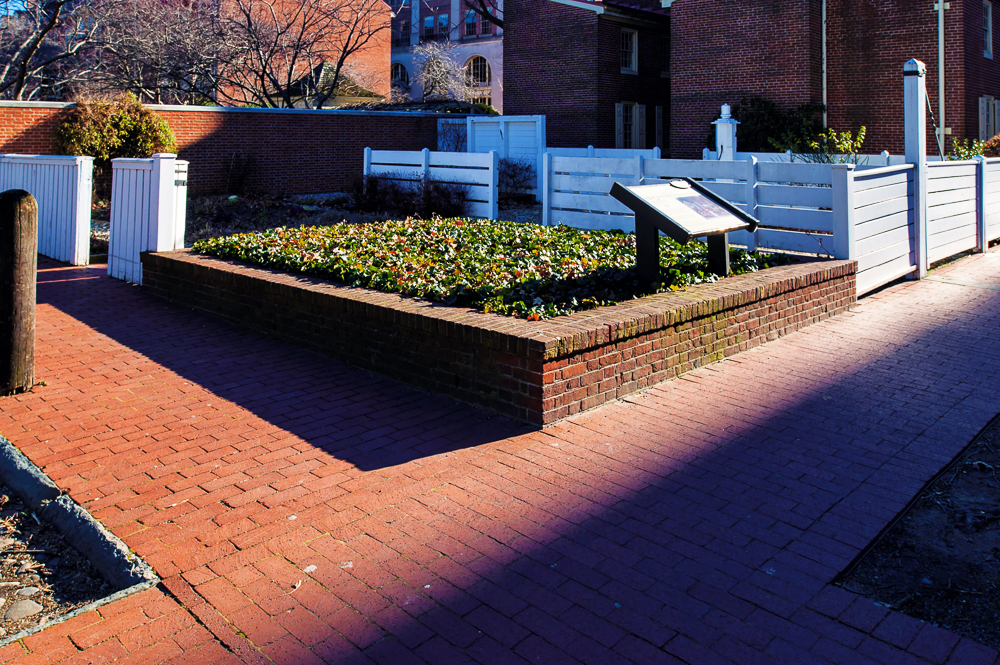This small brick planter is a reminder that most of society lived humbly with few possessions.
On the Street

Sometimes a building’s absence is more important than its presence. William Penn envisioned Philadelphia as a town of freestanding houses on generous parcels of land – sort of like a typical English village. Soon though, commercial realities hit and it became obvious that the land closest to the Delaware River was very valuable. Those wealthy enough to be able to buy parcels found they could add to their wealth by building smaller homes on the rear of their parcels for rentals.
After all, in colonial America only about one urban family in ten could afford to own a house. The poor and most of the working classes – the vast majority of the population – could only afford rental dwellings.
Many of the smaller rental units were built of wood, and some of them survived into the 1930’s, but very few remain today.
These homes were simple boxes with a floor plan the size of the planter pictured here. Often they were only two stories high with a ladder or a tiny winding stair. Each floor usually had only one room, with the family sleeping on the second floor and doing everything else on the first floor; including, for some craftsmen, making and selling wares. While these arrangements seem a little shocking by modern standards, they were no worse and maybe better, than what were available in most English urban areas at the time.
What was a problem throughout the west was increasing living density before public sanitation had a chance to catch up. Wells were the principle source of water and out houses were often dangerously close to them. Combine this lack of sanitation and a very active port with a strong trade to the tropics, and you have ideal conditions for frequent epidemics which killed thousands on a regular basis. It wouldn’t be until the mid-1800s that Philadelphia would get its first public water supply and public sewers.
Also by the early 1800’s more “trinities” were being built as entry level housing like those in Bell’s Court.